Game: BABBDI
Creator: Sirius Lemaitre, Léonard Lemaitre
Platform: Steam
Audience: Ages 16+
BABBDI uses mechanics such as inanimate people, collectable objects, and a monotone, open-world environment to make walking seem aimless and expansive, creating a horror story that both terrorizes and empowers its players.
At the start of the game, the player is placed in a maze-like building with dark concrete and silhouettes. Confined within this initial boundary, the player is forced to interact with strange looking inanimate NPCs.
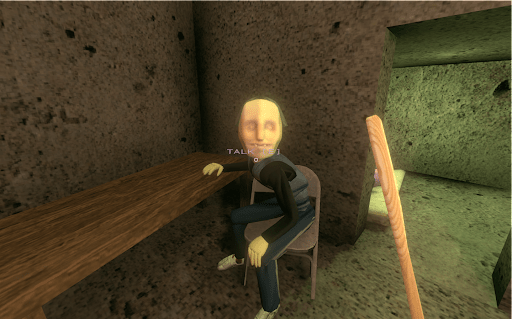
As seen above, the faces are almost ghost-like and lack normal human features that would make it seem more warm and familiar. No matter where you ended up exploring or walking, you were bound to discover an NPC and talk to them. When talking to these NPCs, sometimes they would provide useful context to progress in the game, while other times it was dark backstories that leave the player feeling unsettled. I found myself at points in the game looking more for NPCs to learn about their backstories and discover if they have any purpose – rather than trying to complete the main mission, to escape the city.
Many of the times, these NPCs are motionless and lie dead on the floor or wall, so walking towards them seemed like time stopped and I had to explore more to figure out why. This leads to the next point to how the game casually treats the concept of death. When exploring, there is no stamina loss, no fall damage, or any mechanic that limits the player’s capacity to walk. This led to my gameplay to become more risk-taking and experiment to how much I could push the boundaries of the game. For example, I would frequently jump off the roofs of buildings, charge at walls with motorcycles, or do other risky actions because I knew that I could not die. I felt free to explore these different paths because of the power I felt from being invincible in the game.
In addition, the collectable objects were the sole factor to why I focused more on “walking” and exploring the open-world rather than trying to complete the main objective, to escape. These objects added more abilities to explore the world, such as pickaxes to scale walls, or motorcycles to quickly travel a large expanse of land.
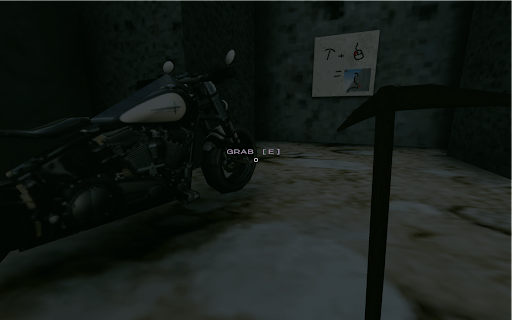
There were also secret collectable objects and achievements that were only able to be completed by aimlessly walking around and exploring every nook and crevice of the world map.
As seen below, I was only able to find 8 secret objects after 45 minutes of gameplay.
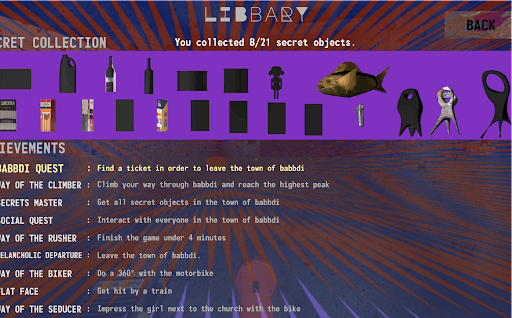
At points in the game I would purposefully go through an entire 15+ floor building just to hopefully find 1 secret object, even if it didn’t directly contribute to the objective of the game. The added challenge to actually find all the secret objects and complete the achievements motivated me to push the boundaries of the map.
Finally, the main element of the game is its monotonous open-world scenery. The general theme is for it to be concrete or very dark rooms. An open-world setting allows for exploration and immersion, giving the player the freedom to discover the game world at their own pace. I didn’t feel rushed and could take my time while exploring. The dark lighting and ominous send definitely contributed to this sense of dread and terror while exploring. I remember one instance of finding a dead body in the dark surrounded by the sound of flies and it was so grotesque that it felt real. This game definitely relies on sensation to keep the player tense at all times and on the edge of their seat.
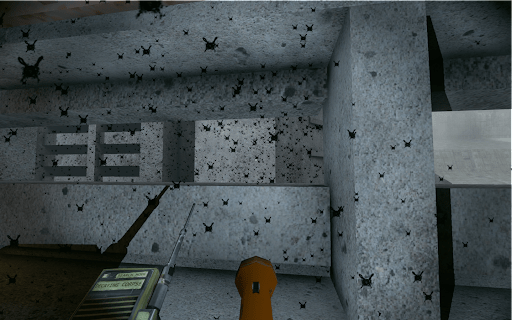
Compared to other walking simulators, this game doesn’t try to sugarcoat the experience for its players. It incorporates aspects of horror games, such as death, decay, dark lighting, and spooky sounds to motivate the player to explore the entire world to escape the city more quickly.
However, within this environment, there would often be misspelled signs and directions, which created a lot of confusion.
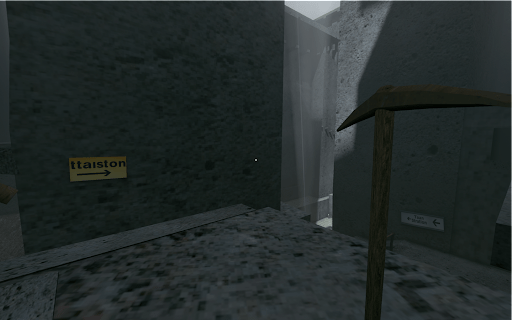
While I understand that this is intentional to give a sense of mystery, it ended up being a point of frustration in the game and led to a lot of instructions being unclear. There were many times where I ended up walking in circles and it didn’t contribute to any sense of fun or purpose in the game. I can imagine that for a dyslexic player, this would make the issue 100x worse.


